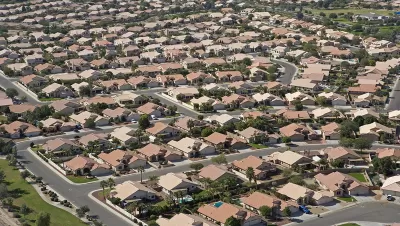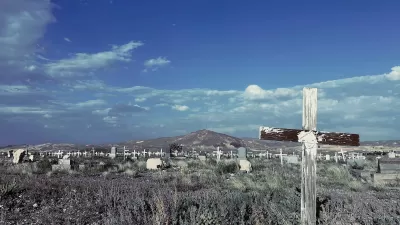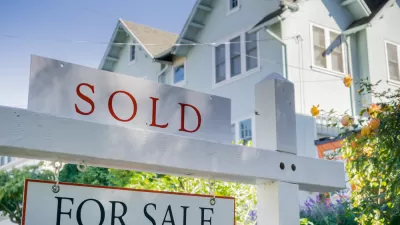Immigrants, both documented and undocumented, are a growing factor in the demand for new housing. In the long term (or sooner), the Trump Administration's hard line on newcomers could lead to instability for the rest of us.

Who's renting or buying all that new suburban tract housing, especially in the Sun Belt? Increasingly, it is people who haven't been long in the United States, including some living here without documentation. In 2013, a Mortgage Bankers Association study found that "in this decade, immigrants nationwide will account for 32.2% of the growth in all households, 35.7% of growth in homeowners and 26.4% of growth in renter households."
It also found that foreign-born residents are buying homes at an increasing rate. And that's not just in your typical "immigrant" states. Edward Helmore writes, "while immigrants were once concentrated in a few gateway states, such as California, New York and Florida, the pattern of immigration after the 2007 economic crash is less concentrated."
The study's author warns that many immigrants pool incomes to purchase homes. Take away only one of those parties, and the purchase can no longer happen.
Another observer points out that while a crackdown on undocumented immigrants alone could chill the market, the real danger is a long-term drop in immigration of every kind. In time, that could critically depress both the housing market and the market for talent in this country.
FULL STORY: Deportation orders threaten Trump's own turf: the real estate market

Trump Administration Could Effectively End Housing Voucher Program
Federal officials are eyeing major cuts to the Section 8 program that helps millions of low-income households pay rent.

Planetizen Federal Action Tracker
A weekly monitor of how Trump’s orders and actions are impacting planners and planning in America.

Ken Jennings Launches Transit Web Series
The Jeopardy champ wants you to ride public transit.

California Invests Additional $5M in Electric School Buses
The state wants to electrify all of its school bus fleets by 2035.

Austin Launches $2M Homelessness Prevention Fund
A new grant program from the city’s Homeless Strategy Office will fund rental assistance and supportive services.

Alabama School Forestry Initiative Brings Trees to Schoolyards
Trees can improve physical and mental health for students and commnity members.
Urban Design for Planners 1: Software Tools
This six-course series explores essential urban design concepts using open source software and equips planners with the tools they need to participate fully in the urban design process.
Planning for Universal Design
Learn the tools for implementing Universal Design in planning regulations.
Ada County Highway District
Clanton & Associates, Inc.
Jessamine County Fiscal Court
Institute for Housing and Urban Development Studies (IHS)
City of Grandview
Harvard GSD Executive Education
Toledo-Lucas County Plan Commissions
Salt Lake City
NYU Wagner Graduate School of Public Service





























